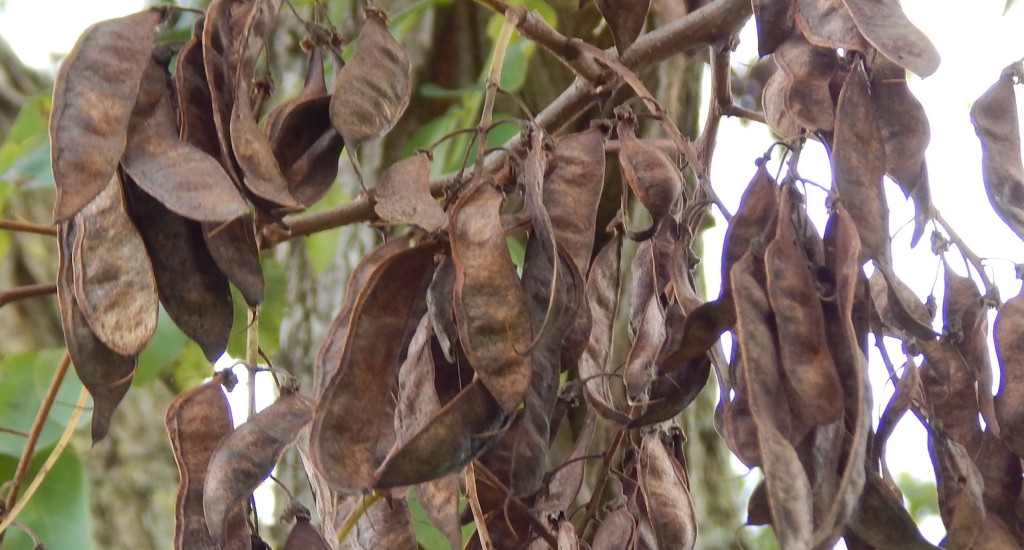
[302] Robinia pseudoacacia, Black Locust
Gleditsia triacanthos, Honey Locust
Introduction
Robinia pseudoacacia, Black Locust, and Gleditsia triacanthos, Honey Locust, are two trees cultivated as ornamental trees in parks and gardens in the UK.
They are both in the legume family, Fabaceae, but come in separate subfamilies, so they are not close relatives of each other, but they do look very similar.
Other members of Gleditsia may be called Honey Locusts and trees in Robinia may be called Locusts.
Robinia pseudoacacia is also called the False Acacia. Gleditsia triacanthos is also known as the Thorny Honey Locust.
Taxonomy
Kingdom – Plants
Division – Vascular Plants
Class – Angiosperms (Flowering Plants)
Order – Fabales
Family – Fabaceae (Legumes)
Subfamily – [A] Faboideae [B] Caesalpinioidea
Tribe – [A] Robinieae [B] Umtiza
Genus – [A] Robinia [B] Gleditsia
Scientific Name – [A] Robinia pseudoacacia [B] Gleditsia triacanthos
Fabaceae is a huge family with over 20 000 species and its subdivisions are changing and not necessarily agreed.
Names
These two trees seem to get their names by association with another tree, Ceratonia siliqua, the Carob tree, that has fruits called locust beans. It is not clear why Carob fruits are called locust beans.
Acacia is another genus in the legume family. Acacia and the Carob are both more closely related to Gleditsia than to Robinia but the name Locust was first applied to the Black Locust. I think ‘black’ refers to the dark colour of the bark.
[The insects that are called locusts are [078] Grasshoppers, named from the Latin word for grasshoppers. Modern entomology no longer considers locusts as distinct from grasshoppers. They are a phase that is triggered in some grasshopper species by their habitat.]
Robinia is named after the French botanist Jean Robin (1550-1629) and his son Vespasien Robin (1579-1662), who brought the plant to Europe in 1601. Jean Robin was the gardener to three French kings – Henry III, Henry IV and Louis XIII. In 1601 and 1636 Jean and Vespasien planted Robinia trees at two locations in France, where they still both stand.
Gleditsia commemorates Johann Gottlieb Gleditsch (1714-86), a botanist who lectured at the University of Frankfurt.
[A] Robinia pseudoacacia, Black Locust
The subfamily Faboideae is divided into about thirty tribes and about 500 genera. Some, like the Black Locust, are trees but it includes many other types such as the [198] Sweet Pea; [214] Bird’s Foot Trefoil and [227] Yellow Sweet Clover.
Black Locust is a medium sized deciduous tree, native to only a few areas of Eastern USA, but now widely cultivated and naturalized across temperate locations of the World. Its name as a false Acacia comes from similarities in the leaves and thorns, as the flowers are very different (and Acacias only grow in tropical and subtropical climates.)
It was named as a locust because of its similarities with Ceratonia siliqua, known as the Old World Locust.
It has dark green relatively wide compound leaves. Leaves contain 9-19 almost round leaflets There are pairs of short prickles at the base of each leaf and young trees may have spines on branches.
Flowers are creamy white in loose clumps. The fruits are typical legumes, flat pea-like pods about 5-10 cm long.
It has several cultivars including a popular variety with bright yellow-green leaves.
[B] Gleditsia triacanthos, Honey Locust
The subfamily Caesalpinioideae, sometimes treated as a family (when, of course, it becomes Caesalpiniaceae,) contains about a hundred genera, mostly tropical trees but including various other forms.
Honey Locust is roughly similar in appearance to the Black Locust. It is native to a slightly large area in the Eastern USA. Its pinnate leaves are bright green.
Fruit pods are about 15-20 cm long.
Long, branched thorns up to ten cm long grow out of the trunk. Thornless varieties are cultivated.
Unlike the Black Locust, the pulp inside the seed pods is edible and was used as a traditional food and medicine in the USA. Its sweet taste is the origin of the ‘Honey’ part of its name.
Ornamental Versions
I have spent a lot of time trying to distinguish these two species and I have come to the conclusion that I can’t do it with any certainty. Even though they are quite loosely connected taxonomically, they have marked similarities in their appearance – pinnate leaf structures and long flat seed-pods. They are the only trees with seedpods likely to be seen in the UK – apart from Laburnum anagyroides, the Laburnum.
I think the variations in cultivated varieties and differences in younger growing trees make it impossible to decide which is which. The thorns of Honey Locust do not appear in many cultivars and the other differences are less significant than the variation in cultivars.
Pictures that follow are probably all varieties or cultivars of either Black Locust or Honey Locust – or they may be from other species of Robinia or Gleditsia or hybrids. I have included some pictures of thorns, leaves, flowers and seed pods.



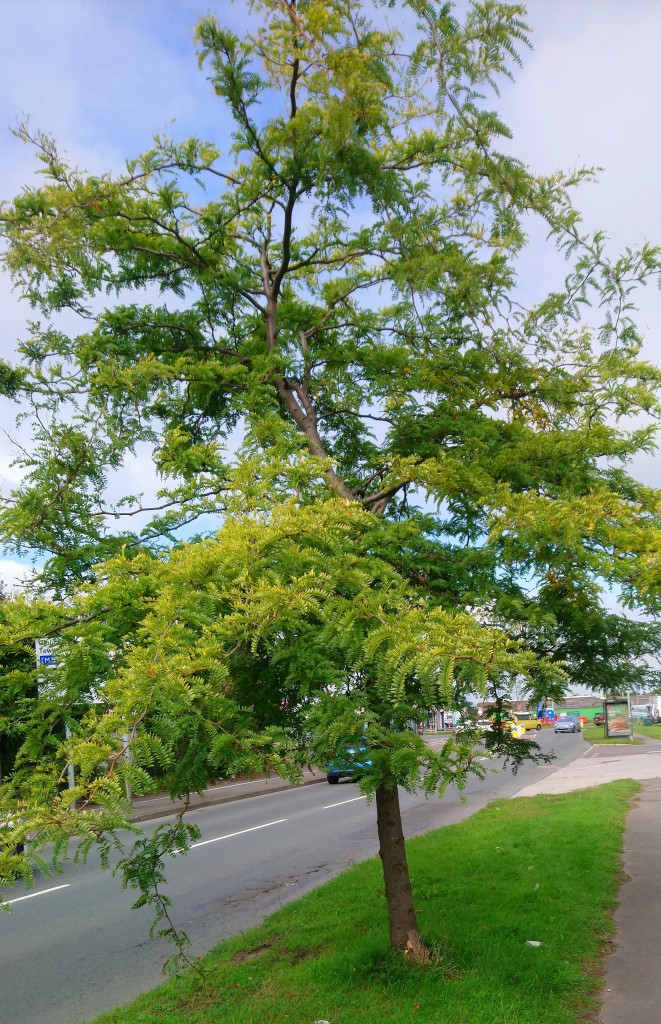
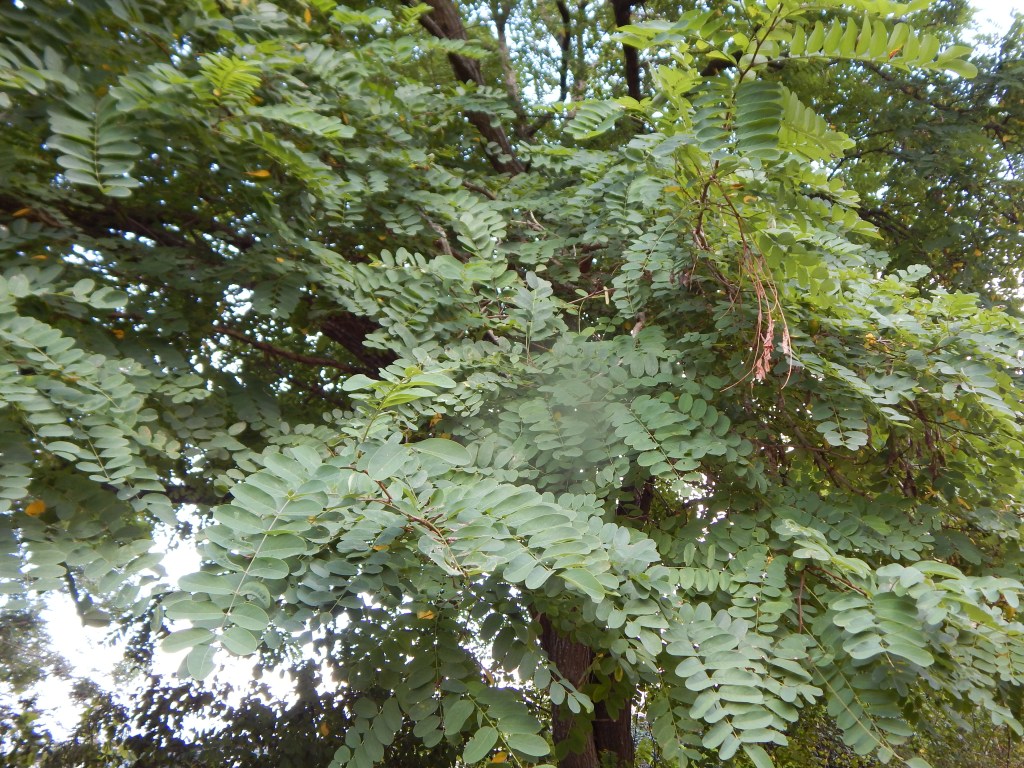



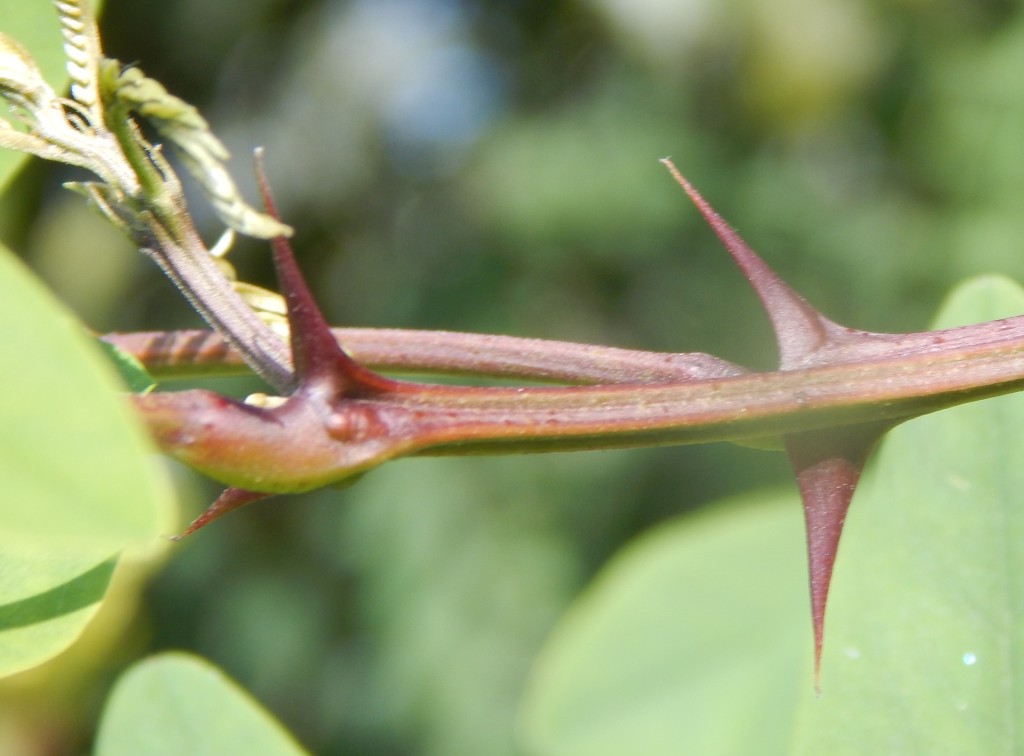
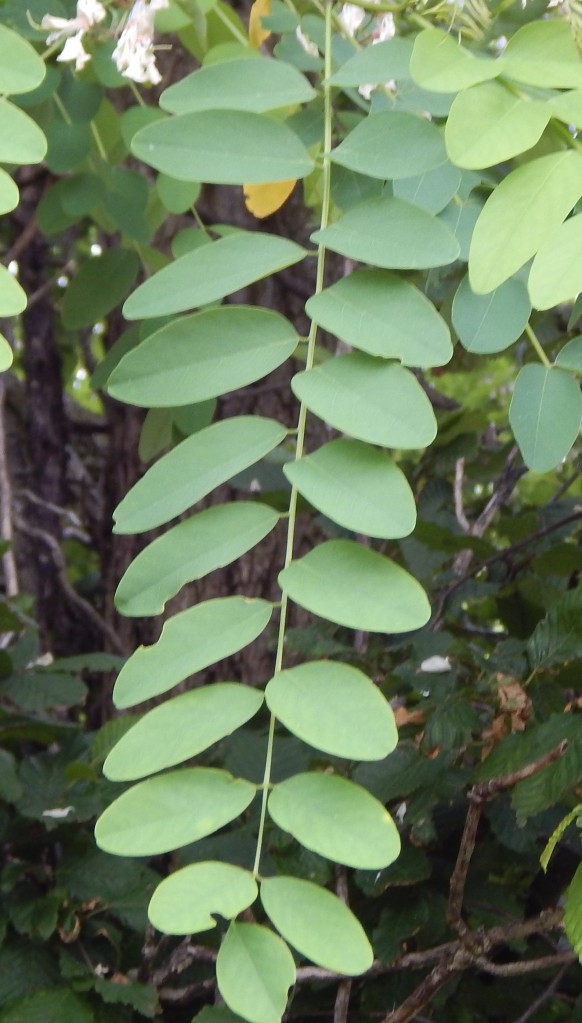
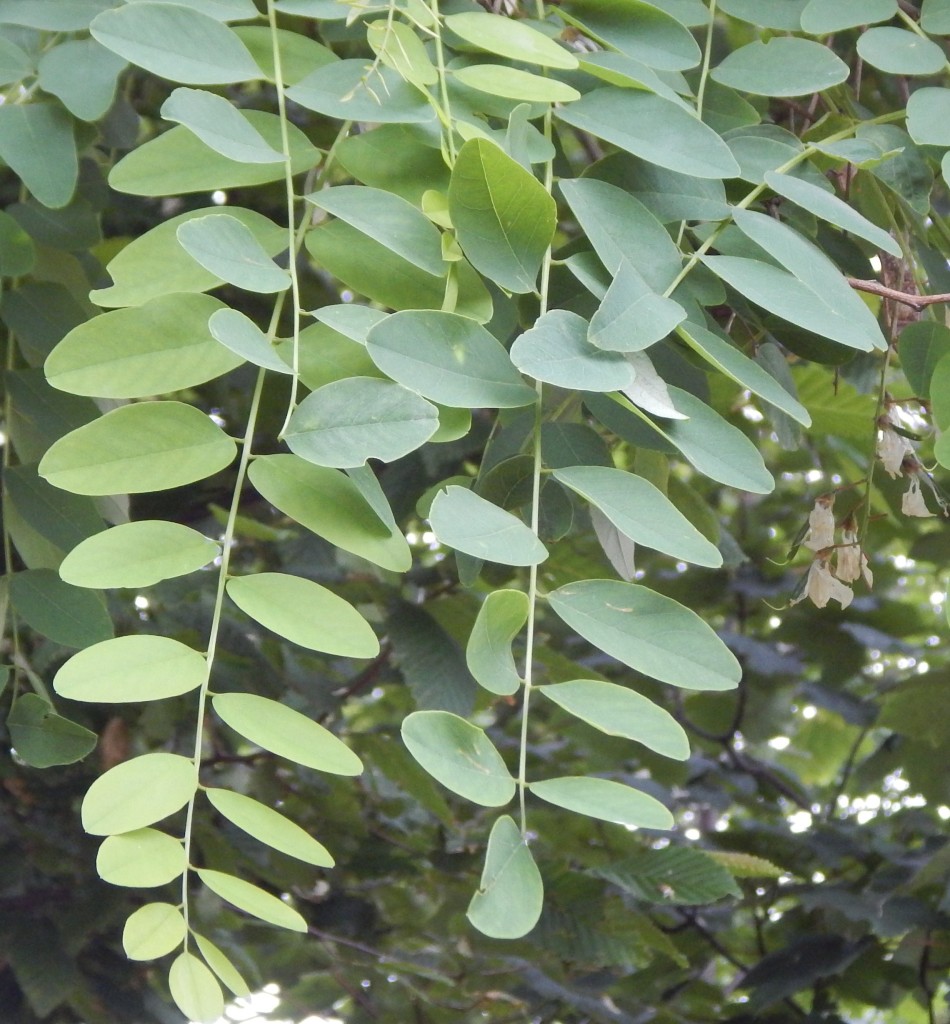
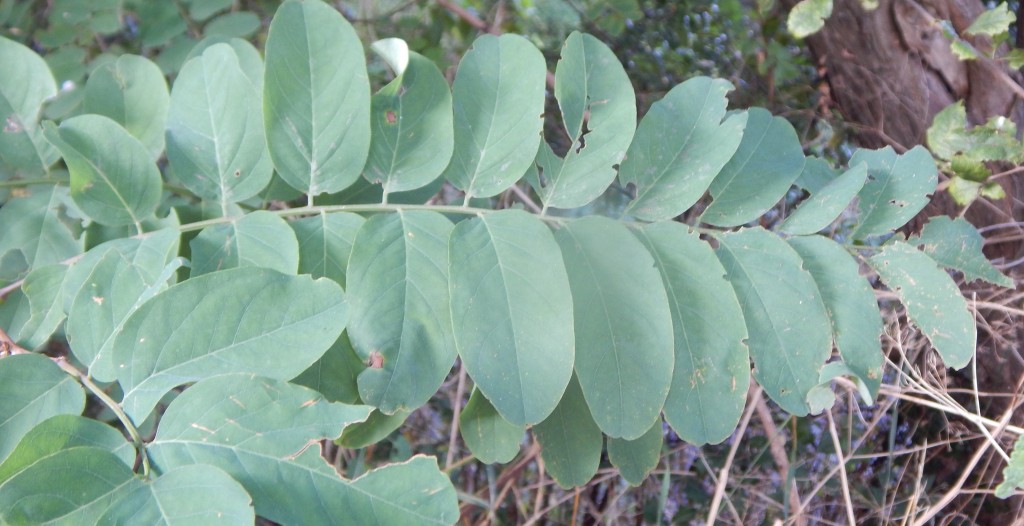


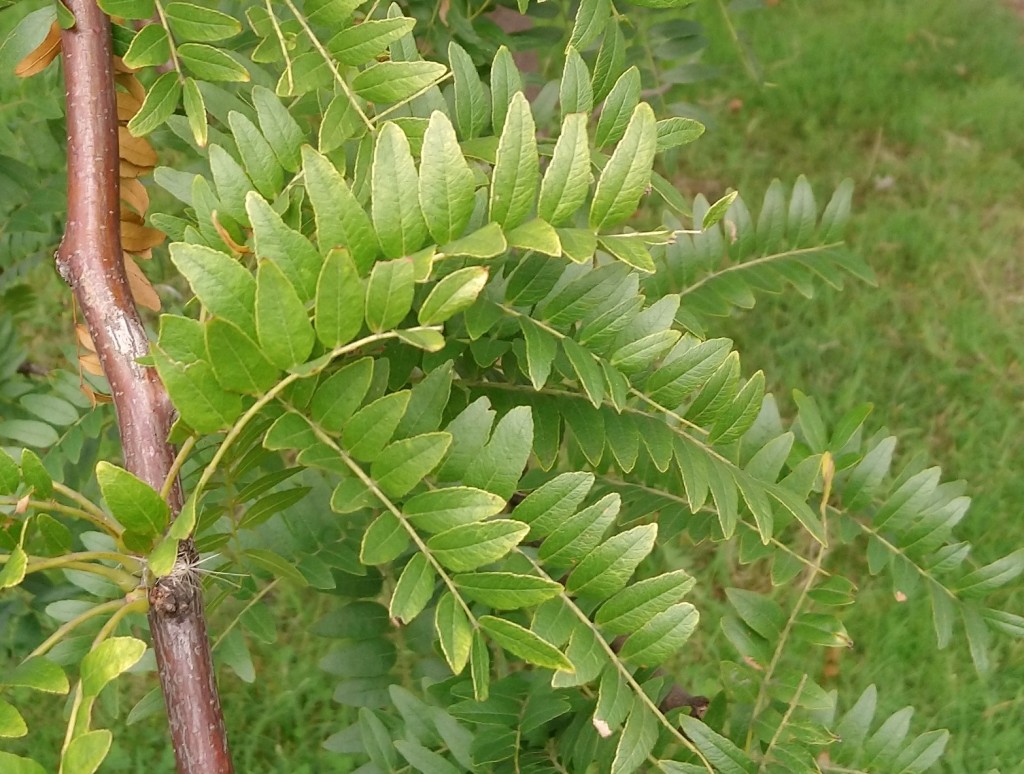

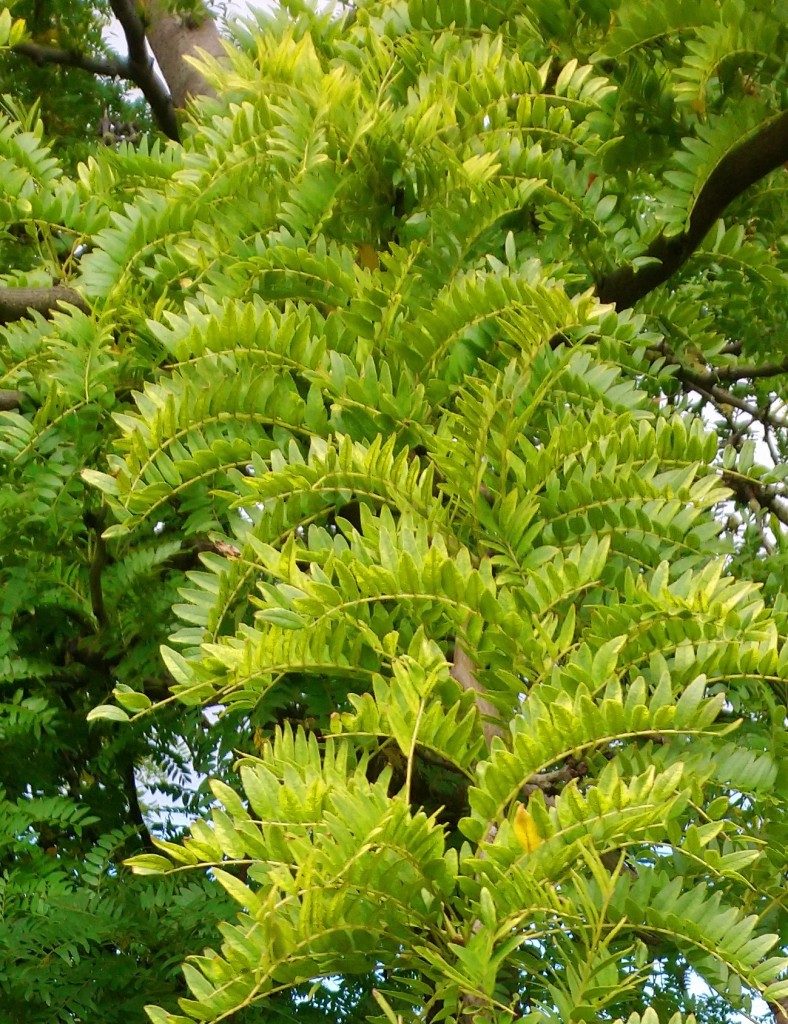

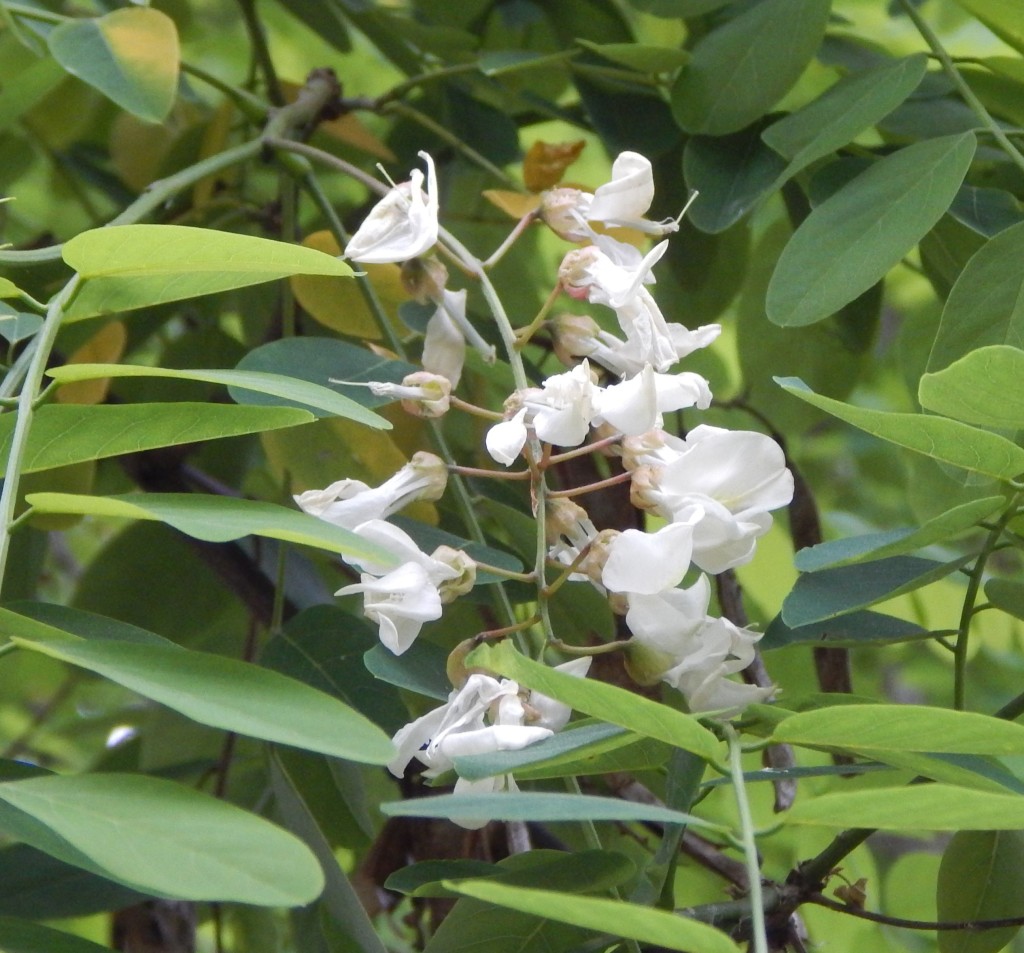
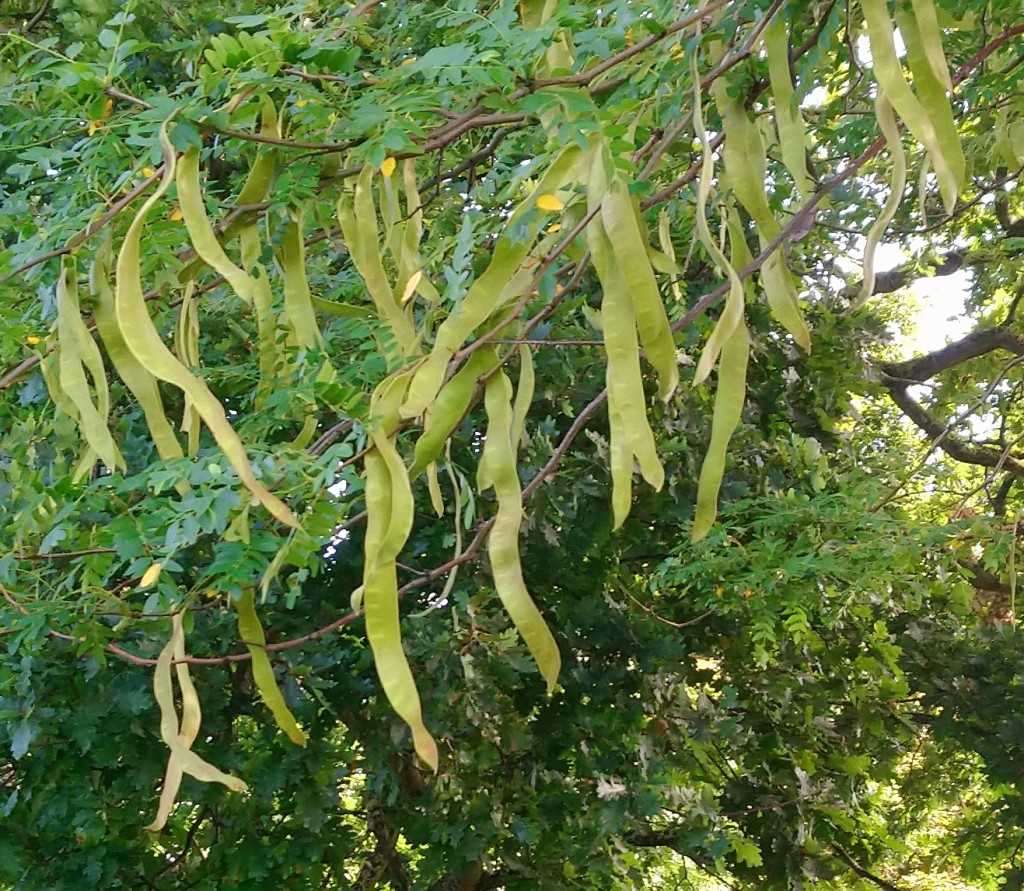
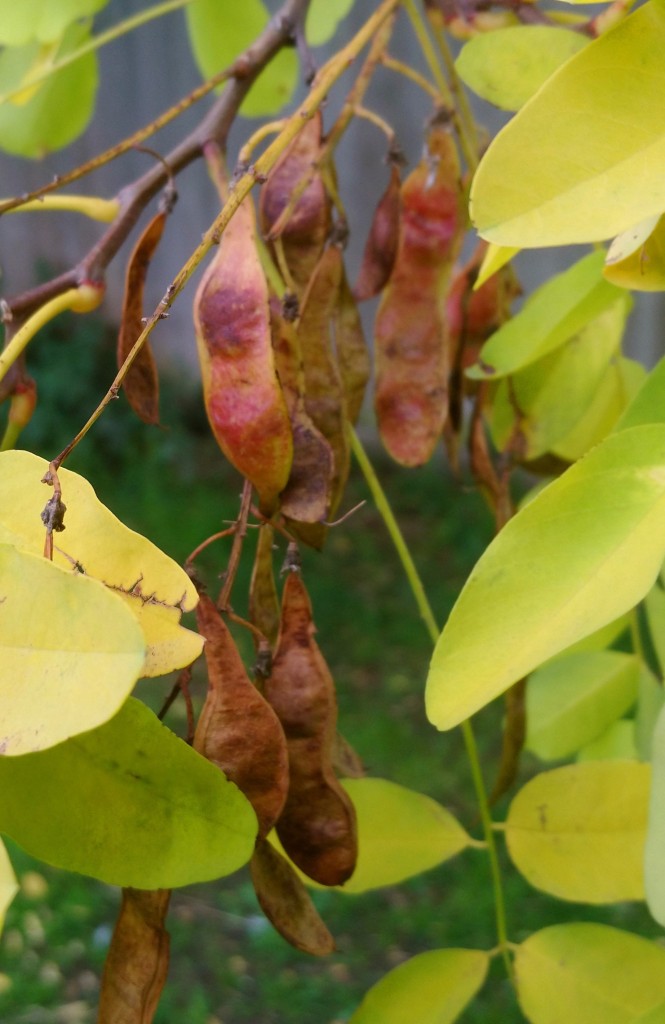

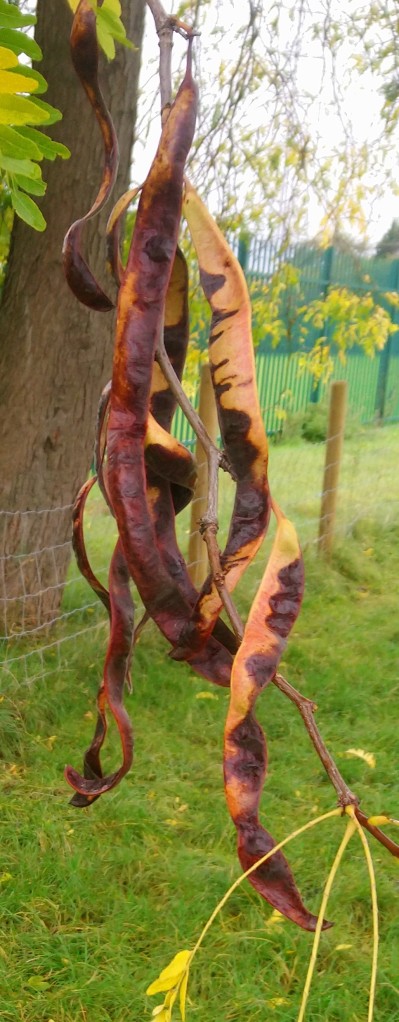
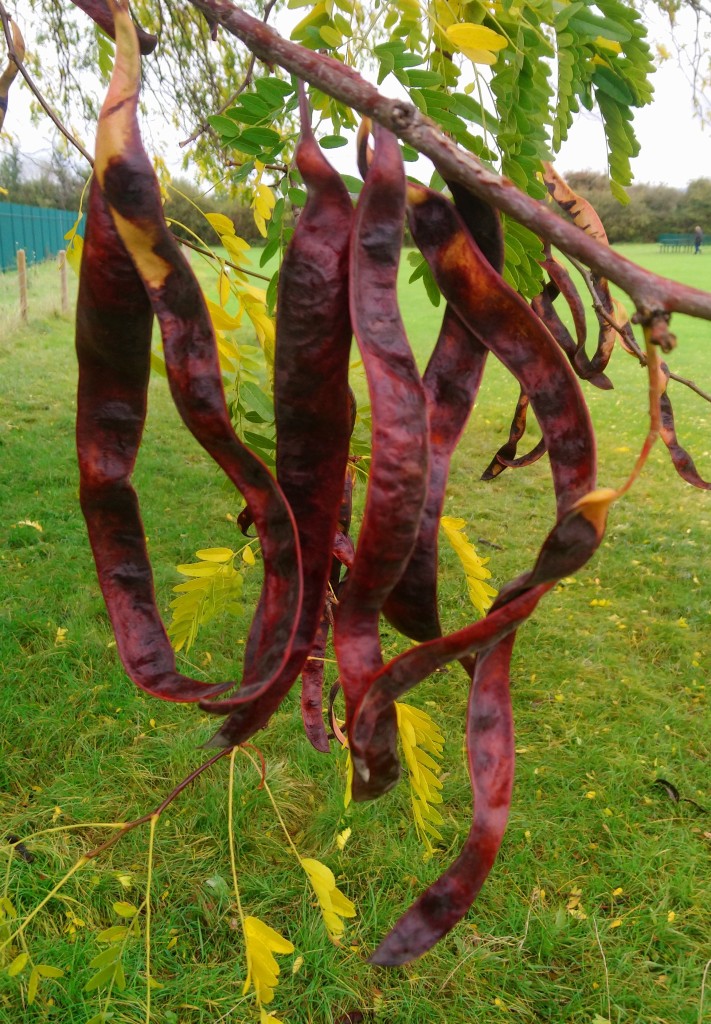
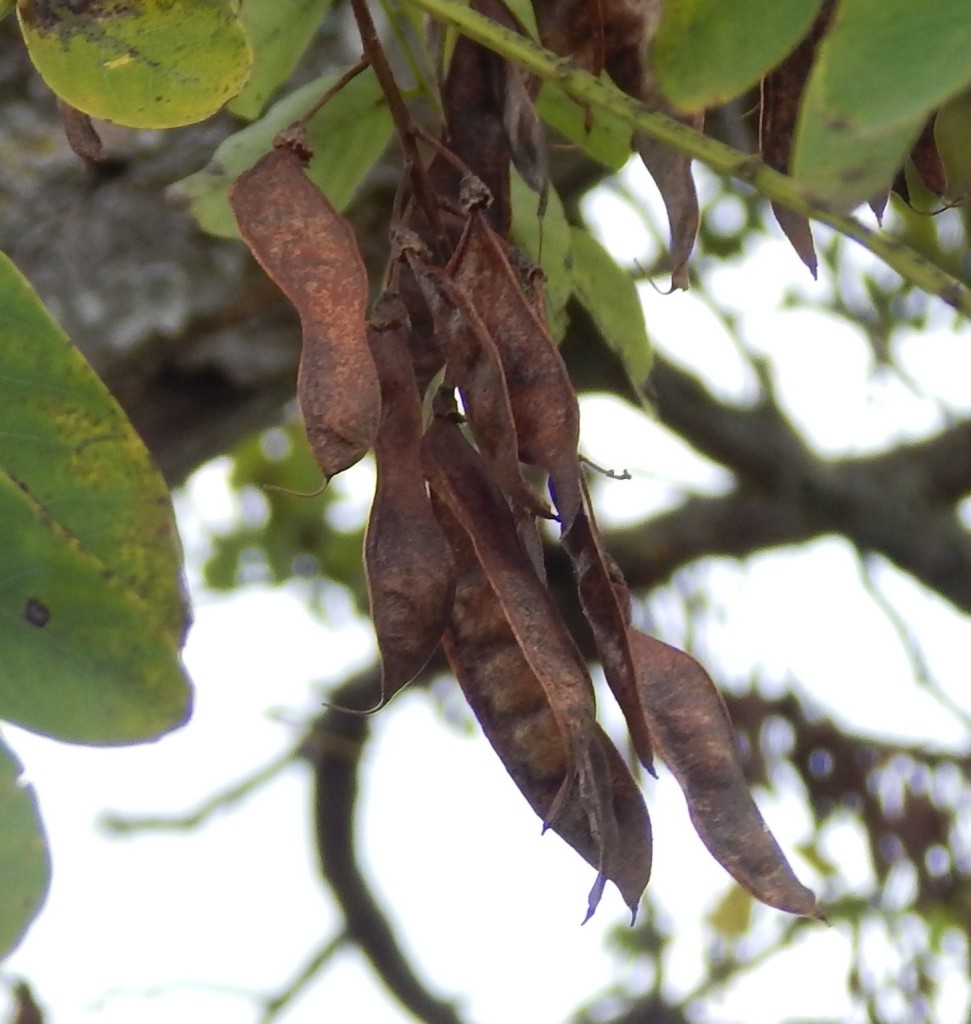
See also
To most people the Laburnum tree, (Laburnum anagyroides or other cultivated species or hybrids,) may be more familiar. Its yellow flowers are easily recognisable, the leaf structure is not pinnate and its seed-pods (containing poisonous seeds) are much smaller than either Locust tree.
